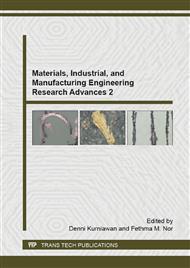p.526
p.531
p.536
p.541
p.546
p.551
p.556
p.561
p.566
Road Safety Outcome Model among Commercial Bus
Abstract:
Road safety outcome is a complex issue involving high number of risk factors and indicators that contributes to road accidents and their severity related to human-vehicle–road interactions. This requires a multi-dimensional model in order to fully understand the road safety situation especially among commercial bus drivers. This study identified some of the risk factors with the objective of establishing the relationship between them through a model for assessing the road safety outcome. The model was developed using data collected from 465 commercial bus drivers in Johor, Malaysia. The estimated model yielded significant relationship between the risk factors (Drivers, Vehicle and Road) and road safety outcomes. The statistical analysis of these risk factors shows that the model has significant fit to the data. The results therefore, yielded a road safety output guideline formula suitable for road safety performance indicator for safety practitioners and stakeholders. The study pointed out three critical risk factors (e.g. Drivers, Vehicle and Road) with their various levels of risk contributions as influence on road safety among commercial bus. Six recommendations based on this finding were made in an attempt to reduce commercial bus accidents.
Info:
Periodical:
Pages:
546-550
Citation:
Online since:
October 2015
Authors:
Keywords:
Price:
Сopyright:
© 2015 Trans Tech Publications Ltd. All Rights Reserved
Share:
Citation:


